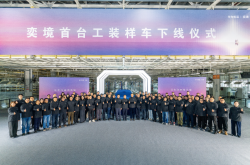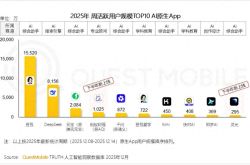Car Subsidies Halted in Many Regions? A Turnaround is on the Horizon
![]() 07/18 2025
07/18 2025
![]() 581
581
Has the opportunity for bottom-fishing passed?
In the first half of the year, following the cessation of price wars, news that car trade-in subsidies have been suspended in various regions further chilled the automotive market. Cities including Zhengzhou, Luoyang, Xinjiang, and Shenyang have successively issued announcements regarding the suspension of applications for car replacement and upgrade subsidies.
The abrupt suspension is primarily due to the national subsidy funds' consumption rate far surpassing expectations. Some regions ran out of funds ahead of schedule due to uneven funding allocation, leading to a "downtime" in subsidy applications.
The topic of subsidy suspension quickly gained traction on social media, sparking widespread anxiety: Benefits that were supposed to last until the end of the year, how could they suddenly vanish?
An official explanation swiftly followed. There has been no change in the policy to expand the scope of trade-in subsidies for consumer goods. The progress of subsidy fund utilization is in line with expectations, and 138 billion yuan of central funds will be allocated in the third and fourth quarters. Simultaneously, relevant departments will guide local governments to further optimize and improve the subsidy distribution method, ensuring smoother and more orderly policy implementation and balanced fund utilization until the end of the year.
Over the past two years, the surge in car consumption in China has been closely tied to national subsidy policies. Attracted by trade-in/scrappage subsidies, consumers' purchasing intentions have been greatly stimulated, and car manufacturers have also achieved scale growth with the assistance of "national subsidies".
However, the latest news indicates that while "national subsidies" continue, another significant "tool" for stimulating consumption, price wars, has come to an "abrupt halt". According to statistics, from April to June, the number of discounted car models decreased significantly, and promotional efforts were drastically reduced.
Guided by relevant departments, the years-long car "price war" seems to be finally coming to an end. In the ever-changing automotive market that is once again experiencing a turnaround, is it moving towards a "rational return" or a rapid cooling?
Policy Stimulus
In the current fiercely competitive automotive industry, the trade-in policy is regarded as the "golden key" to breaking the deadlock.
According to data from the China Association of Automobile Manufacturers, domestic new car sales in the first five months of this year increased by more than 10% year-on-year. This far exceeds the market growth rate expected by the industry and is inseparable from the continuous efforts of the car trade-in policy. As of May 31, the number of car trade-in subsidy applications this year reached 4.12 million, with 1.23 million applications in May alone, a 13% increase compared to 1.09 million in April.
Another set of data from the China Association of Automobile Manufacturers mentions that the proportion of car replacements and upgrades is expected to increase to over 65% by 2025, indicating that the structure of China's car consumption market is undergoing a transformative change.
The China Passenger Car Association (CPCA) analyzed that the proportion of first-time car purchases in the car market was as high as 70% in 2016 and had dropped to 37% by 2023. In stark contrast, the proportion of replacements jumped from 23% in 2016 to 48%, and the proportion of additional purchases also rose from 7% to 15%. As of May 2025, nearly 70% of private car purchases were realized through trade-ins, shrinking the traditional first-time car purchase market to 30%.
The aftereffect of policy promotion is still gaining momentum. According to preliminary estimates by the China Automobile Dealers Association, by 2025, over 5 million passenger cars will benefit from scrappage and renewal subsidies, and over 10 million cars will be replaced and upgraded.
In an interview, the relevant person in charge of the Circulation Industry Promotion Center of the Ministry of Commerce said, "The scale of old cars eligible for subsidies exceeds 25 million, including about 13 million cars from the first year of China's fourth emission standard and 12 million cars from the third emission standard and below." This policy adjustment has unleashed immense potential, and it is expected that trade-ins will drive sales exceeding 2 trillion yuan throughout the year.
Cui Dongshu, Secretary-General of the CPCA, also pointed out, "The contribution of replacements and additional purchases continues to increase, and consumption upgrades have become the absolute mainstream in car purchases." With the expansion of the trade-in policy for consumer goods, diversified consumption scenarios are constantly being innovated, driving the performance of related industries and chain industries to improve.
Industry Adjustment
While the policy lever drives the development of the circular economy, the automotive industry is also undergoing a reordering. At the 2025 China Electric Vehicle Hundred People Forum, the relevant person in charge of the National Development and Reform Commission bluntly stated that the current automotive industry is characterized by "prominent disorderly competition," with some enterprises seizing market share at the expense of profits, and phenomena such as false advertising and malicious slandering being repeatedly prohibited.
Wang Xia, President of the China Council for the Promotion of International Trade Automobile Sub-Council, pointed out that in 2024, over 200 domestic car models saw price reductions, and in the first four months of 2025, there were over 60 models. In May, under the leadership of leading car companies, the prices of over 100 models were reduced, with the maximum reduction exceeding 50,000 yuan, and even models priced at the 30,000 yuan level appeared, reducing the industry profit rate to below 4%.
The interests of the supply chain, dealers, and vehicle manufacturers are fragmented, and the asymmetric, unfair, and changeable competitive environment has made the automotive industry "smoky," with the leaders of various car companies "clashing" in their words.
Therefore, "cooling down" the automotive industry has become a key focus of relevant departments. From halting excessive marketing of "intelligent driving" to regulating "hidden door handles" to restricting the abuse of OTA upgrades and upgrading and updating national standards for battery safety requirements, the automotive industry is welcoming intensive "codes of conduct".
Moreover, regarding the recent suspension of "national car subsidies" in many regions, some analysts also stated that extensive subsidies have given rise to numerous issues. Some unscrupulous merchants have taken advantage of subsidies by creating "zero-kilometer used cars" (transferring new cars disguised as used cars to obtain subsidies) and issuing false invoices, which not only accelerated the consumption of funds but also disrupted new car prices, causing the subsidy policy to deviate from its original intention of benefiting the people. These arbitrage chaoses also forced regulators to further rectify the situation.
Referring to the previous experience of rectifying the real estate industry, this reform in the automotive industry will promote the industry's shift from "traffic competition" to "technological breakthrough" through institutional restructuring, technological breakthroughs, and ecological reshaping.
Under the guidance and appeals of relevant departments and industry organizations, stopping disorderly price war competition and stabilizing terminal price order have become the consensus of upstream and downstream car enterprises.
This article is originally created by Zhongxin Auto. Welcome to share it with your friends. If media needs to reprint it, please indicate the author and source at the beginning of the article. Any media or self-media is prohibited from using any content of this article to produce video or audio scripts. Violators will be held legally responsible.






